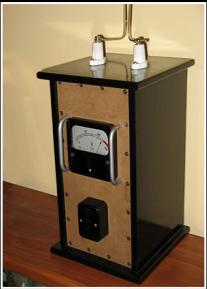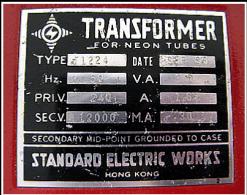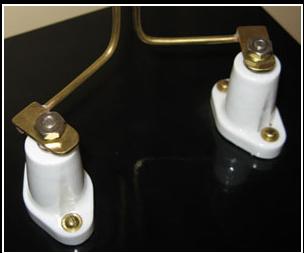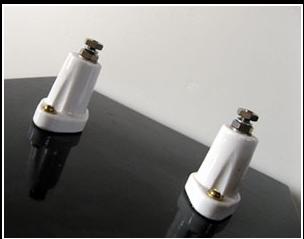The Jacobs Ladder device is really just a neon sign transformer in a box with a switch, a voltage meter and the two wires that form the ladder mounted on top of the box attached to insulated mounting posts. The box I made from MDF. It is glued and nailed together with internal fillets for extra strength. The transformer is very heavy so the box must be robust. I paint the outside of the box with many layers of the cheapest varnish I can buy to seal the wood. I then sand the box and finish it off with several coats of gloss black spray paint. The front panel is made from Masonite. Mounted to it is a 0-300VAC meter and a Bakelite switch. I used many screws around the edge of the front panel to hold it in place because somebody once told me I might have one loose. The bottom of the box has a piece of felt glued to it to stop it scratching whatever it is sitting on. The mains cable runs out of a hole in the back of the box. I have a fuse wired into the transformer primary circuit inside the box.







